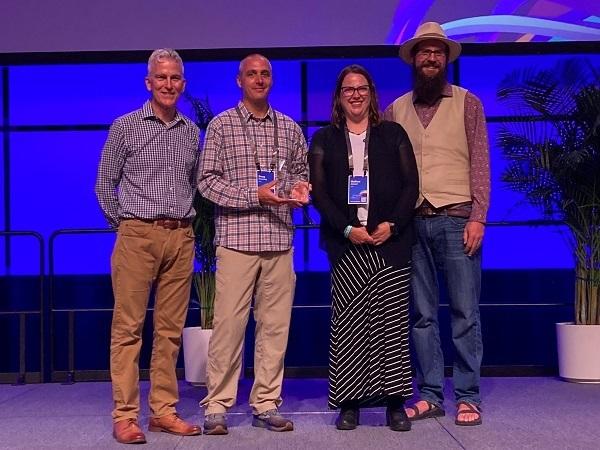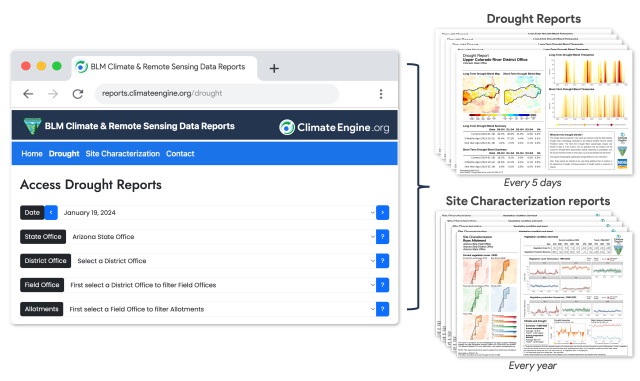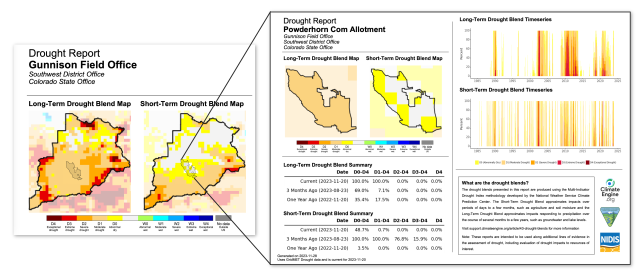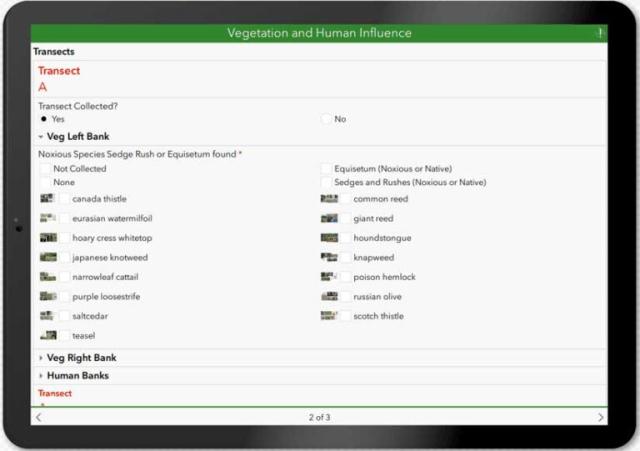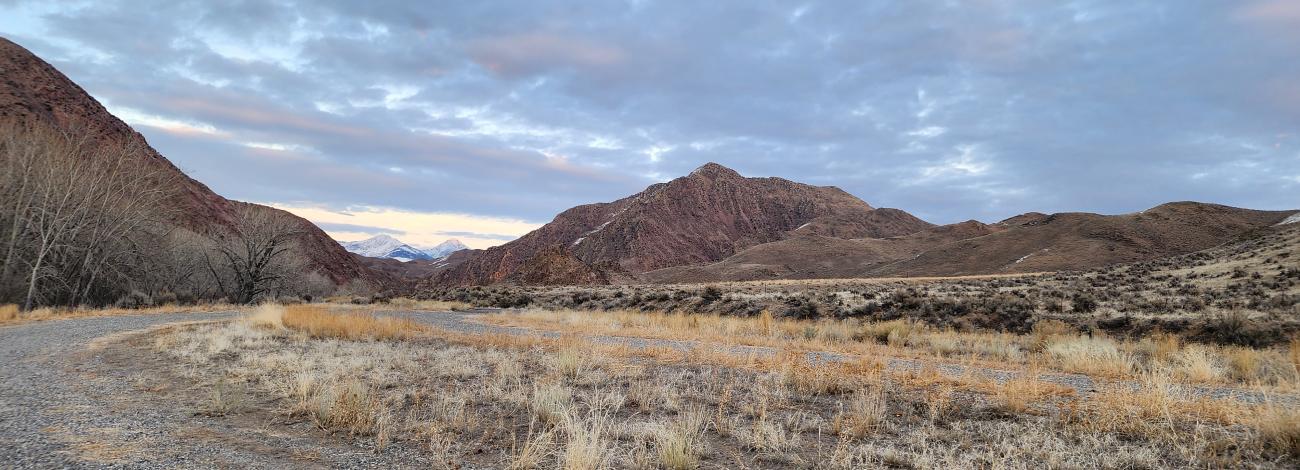
Announcements and Highlights
Navigating the path to Assessment, Inventory and Monitoring (AIM) Financial Assistance Webinar Information
Click on this title to follow the link to the recorded video Navigating the path to Assessment, Inventory and Monitoring (AIM) Financial Assistance
Thank you for joining us for the webinar on "AIM Financial Assistance". Above you can find the link that will redirect you to the recorded webinar session.
For further information we have attached the webinar slides and the Financial Assistance Workflow and Terms documents found in the links provided below. Please submit any questions or comments to: blm_oc_noc_aim_team@blm.gov
When searching on https://www.grants.gov/search-grants, use the search feature for "CFDA" and type in one of the three numeric categories to more easily locate the AIM related Notices of Funding Opportunities:
- 15.237 (Rangeland Resource Management)
- 15.247 (Wildlife Resource Management)
- 15.244 (Aquatic Resources Management)
The BLM anticipates releasing new notices of funding opportunities to support AIM monitoring in fiscal year 2024, which will be open to non-profit and government organizations, Tribes, and universities. The BLM plans to release these funding opportunities through the rangeland resource management (assistance listing 15.237), aquatic resource management (assistance listing 15.244), and wildlife resource management (assistance listing 15.247) programs.
We would appreciate your feedback on the webinar. You can provide feedback using this form.
BLM collaborative efforts produce innovative drought monitoring tool for managers
Drought affects us all in the West. Droughts have been referred to as creeping natural disasters, as they often develop gradually, cover very large areas (yet produce irregular effects), and can go unnoticed until they have widespread effects on vegetation or water supplies. Every drought is a little bit different in how severe it is, how long it lasts, and the area it covers. The BLM is working to be water smart: investing in restoration efforts, improving the health of our land, and retaining water on the landscape by mimicking nature. Being water smart requires tools that improve our understanding of drought conditions, water availability, and the impact of our actions so we can make wise decisions.
The BLM’s Aquatic Resources; Assessment, Inventory and Monitoring (AIM); and Rangeland Management programs have partnered with ClimateEngine.org to produce climate and remote sensing data reports for all BLM-managed lands in the contiguous United States. The Climate Engine App is a partnership between researchers at the Desert Research Institute (DRI), University of California Merced, Google, and federal partners such as the BLM and the National Oceanic and Atmospheric Administration. The publicly available tool provides user-friendly access to satellite and climate data. BLM offices can quickly generate a drought or site characterization report to assess drought indicators and satellite-based vegetation cover and productivity trends dating back to 1986.
It’s an exciting time in the remote sensing world as we have access to more data than ever before; however, harnessing this information and coupling it with climate data can be challenging.
“The goal of this new platform is to lower the barrier to using timely drought and satellite-based vegetation datasets for resource managers,” said Eric Jensen, geospatial data scientist at DRI. “We have worked closely with the BLM to identify relevant drought indicators, make it easy for managers to pinpoint the land unit they’re interested in, and download a simple report that they can use for reporting and decision-making processes.”
The new tools build on years of collaboration between ClimateEngine and BLM, beginning with work in Nevada and Montana. ClimateEngine and similar remote sensing tools are increasingly used in NEPA documents, grazing permit renewals, wild horse and burro analyses and other decision-making efforts. Several examples are collected in the AIM Decision Library.
BLM Range Management Specialist, Justin Shirley, added: “ClimateEngine.org provides field office leadership with another line of evidence to support their decision-making efforts across multiple scales with a variety of user groups.”
BLMers can learn more about the new Climate and Remote Sensing Data Reports from a recently recorded AIM Practitioners by DRI and BLM staff. Additional information on the reports can be found in recent press releases by the National Integrated Drought Information System and the Desert Research Institute.
Story by Tim Assal, NOC Geospatial Ecologist.
Accomplishments
BLM Assessment, Inventory and Monitoring Team featured in Esri’s ArcUser magazine
Congratulations to the BLM Assessment, Inventory and Monitoring (AIM) Team for their feature in the winter 2024 edition of Esri’s ArcUser magazine! Esri is the global market leader in geographic information system (GIS) software, location intelligence, and mapping.
ArcUser magazine, started in 1998, provides practical, technical information to help people better understand and keep current with GIS technology and make the best use of Esri software. Its articles illustrate best practices and innovative ways to meet new challenges and solve common problems. Articles address the specific needs of GIS managers, GIS developers, GIS technicians, and those who use GIS to improve business processes or perform research.
Doug Browning, the AIM Team Geospatial Data Systems Architect contractor with Sanborn Map Company, was the subject of the ArcUser “Faces of GIS” section in the latest issue of the magazine. Browning is an Esri Community “Most Valuable Participant” (MVP). The Esri Community is a global community of Esri users where people can find solutions, share ideas, and collaborate to solve problems with GIS. Being designated an MVP recognizes Browning’s contribution of thousands of posts on the Esri Community’s message board, and hundreds of solutions helping other users with GIS challenges over the years.
Browning designs and manages large integrated workflows that combine ArcGIS Online, ArcGIS Field Maps, and ArcGIS Survey123 collecting at more than 8,000 sites and the taking of more than 100,000 images each field season. His ArcGIS-enabled applications provide navigation to isolated survey sites, capture massive datasets over repeated day-long assessments, and convert that data into location-based information that’s useful to the BLM, its federal and nongovernmental partners, and the public.
The objective of the BLM AIM program is to provide a standardized monitoring strategy for assessing natural resource condition and trend on BLM-managed lands. The AIM Strategy provides quantitative data and tools to guide and justify policy actions and land use and adaptive management decisions. AIM embraces:
- Structured implementation to guide monitoring program development, implementation, and data use for decision-makers.
- Standardized field measurements to allow data comparisons through space and time in support of multiple management decisions.
- Appropriate sample designs to minimize bias and maximize the inference area of collected data.
- Data management and stewardship to ensure data quality, accessibility, and use.
- Integration with remote sensing to optimize sampling and calibrate continuous map products.
Story by Doug Browning, AIM Data Architect
- Article: https://www.esri.com/about/newsroom/arcuser/sustaining-public-lands-with-location-data/
- Full PDF of the winter 2024 ArcUser magazine: https://www.esri.com/content/dam/esrisites/en-us/newsroom/arcuser/au-winter24.pdf
The BLM Assessment, Inventory & Monitoring team at the National Operations Center was honored with a 2022 Esri Special Achievement in GIS (SAG) Award at the Esri User Conference. The annual award recognizes the outstanding use of, and leadership in, the field of Geographic Information System (GIS) technology. The BLM was the sole federal agency among this year's recipients. Read the ESRI article.
